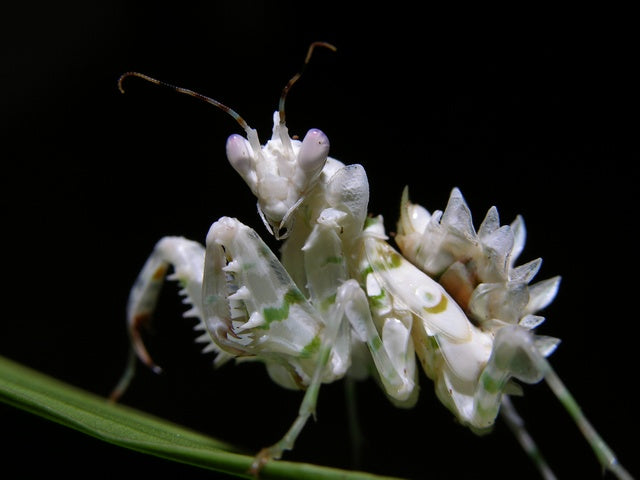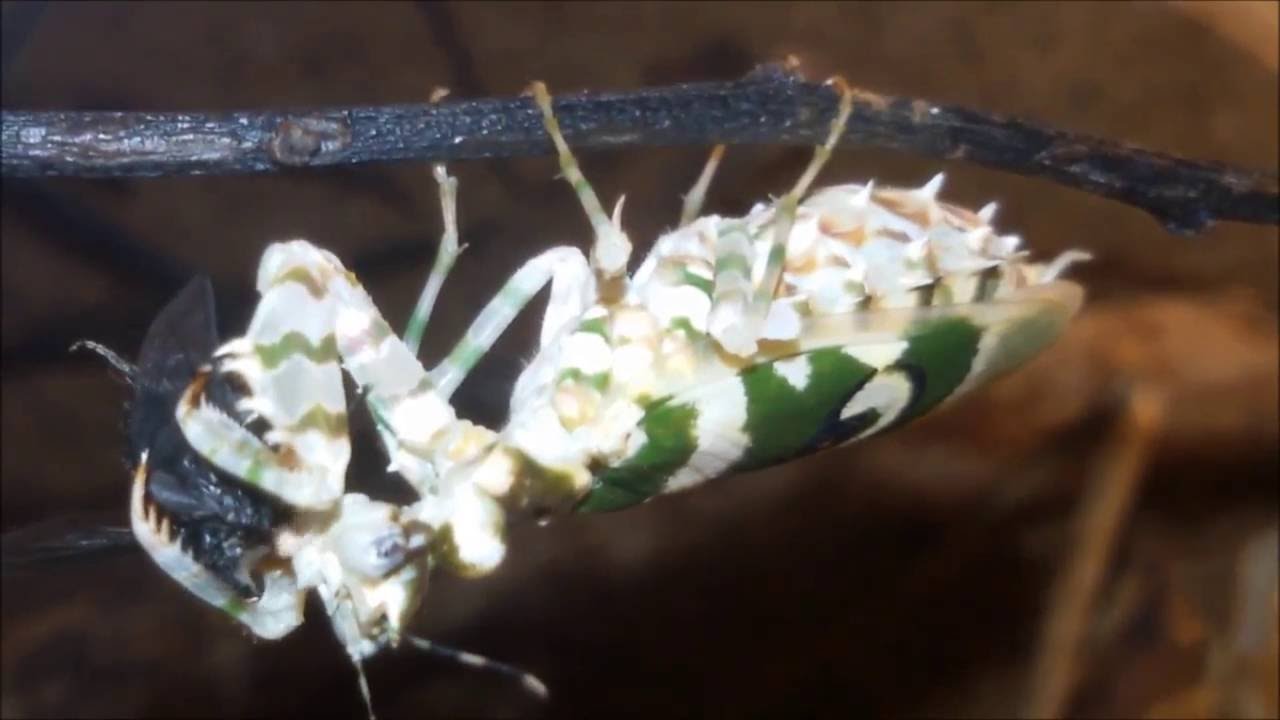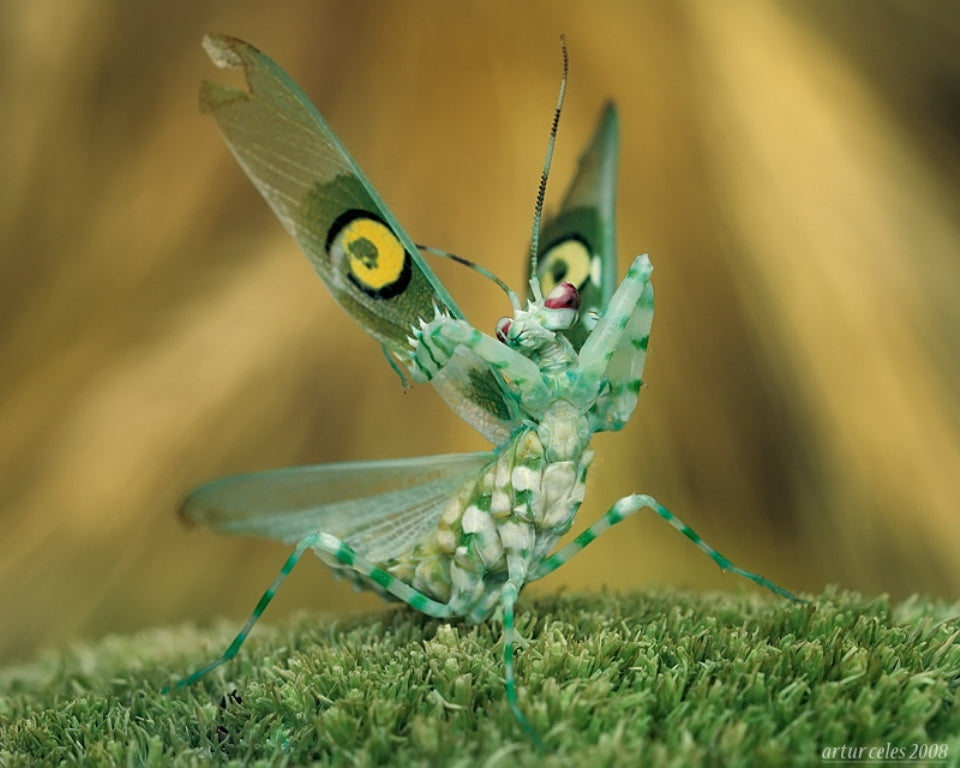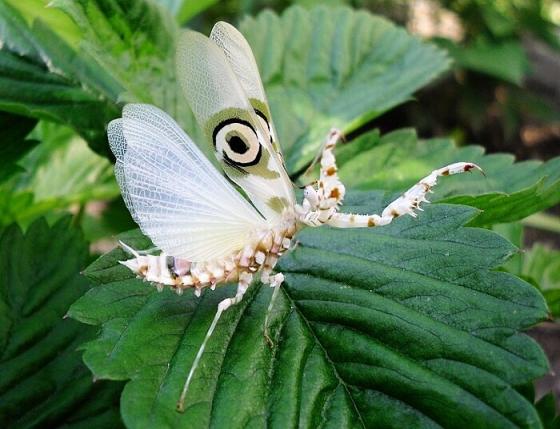



Pseudocreobotra ocellata spiny flower praying mantis
$35.00 - $100.00$0.00
Pseudocreobotra ocellata, known as the African flower mantis or (with other species) as the spiny flower mantis, is a Flower Mantis (1.5 inches or 38 millimeters) native to Africa, ranging from Angola and South Africa in the south to Uganda in the east and Senegal in the west. It was described by the French naturalist Palisot de Beauvois in 1805.
The adult has bold disruptive coloration in cream and green, providing effective camouflage against flowers and in damp leafy places. The male reaches 25 mm long, the female 32 mm. There are spiny projections under the abdomen, 6 in the male, 5 in the female. The wings of the male are longer and wider than the abdomen, while the female's wings are narrower than the abdomen and can only briefly sustain flight.
Like those of Pseudocreobotra Wahlberg, the wings of P. ocellata are marked with a large brightly colored eyespot used in dramatic display to startle predators. The adults are aggressive mimics of flowers, waiting until prey approaches to grasp it with their foreleg.
I refer to this mantis as the "Q" mantis.
It has wing markings that resemble the letter Q.
Like P. wahlberghii, ocellata is a beautiful flower mantis and a wonderful species.
They are easy to care for and, if well fed, can be kept communally, ultimately breeding and laying ooths.
1.5 inches or 38 millimetres) native to southern and eastern Africa. The adult has spiny structures on the underside of its abdomen, giving it its name. It is variable in color, typically greenish, but it can equally be yellowish, pinkish, or reddish. It has a striking spiral "9" mark on its forewings, providing a conspicuous black, green, and cream eyespot surrounded by a green patch. The hind wings are orange on the inner part and transparent on the outer part. The species is common in captivity and is easy to rear. The female lays egg cases almost three times its size.
Behaviour and ecology
P. Wahlberg has a dramatic display in which it spreads its forewings, making itself appear larger and prominently displaying its eyespots to startle would-be predators. While at rest it is well camouflaged, and is a sufficiently good aggressive mimic of a flower that prey insects can attempt to pollinate it, at which moment the mantis seizes and eats them. The mantis is able to kill prey several times larger than itself.
General
Scientific name: Pseudocreobotra ocelleta
German Name: African Flower Mantis
Distribution: Eastern South Africa
Final size: males approximately 4 cm, females about 5 cm
attitude
Temperature: Day 25 - 30 ° C, night room temperature
Relative humidity: Tags 50 - 60%, at night to 70 - 80%
Recommended minimum size terrariums WxDxH: 20 x 20 x 30 cm
Aggressiveness towards conspecifics: Medium
Difficulty: Moderate
Biology
Number molts to the adult stage: females about 8 (adult in L9), males about 7 (adult in L8)
Reaching maturity after molting Adult: females about 3 weeks, males about 2 weeks
Development time in ootheca: ca. 4 weeks
Hatching rate per ooth: up to 50 pieces
Feeding
L1 / L2: Small fruit fly Drosophila melanogaster
L3: Large fruit fly Drosophila hydei
L4: Large fruit fly Drosophila blue-bottle flies
L5 / L6: Large fruit flies Blues bottle flies
L7 to adult: Blue bottle flies
Behavior
The African Flower Mantis is usually white-green. Occasionally, it turns white but pink or yellow, depending on how it is kept moist and what surface it sits on. Thus, it can match the color of the flowers.
This Mantis will "Threat display" wings with large eyespots to deter attackers or if frightened. It of course, is harmless and so interesting to witness
Ooths are not guaranteed as improper incubating can cause the ooth to die.




